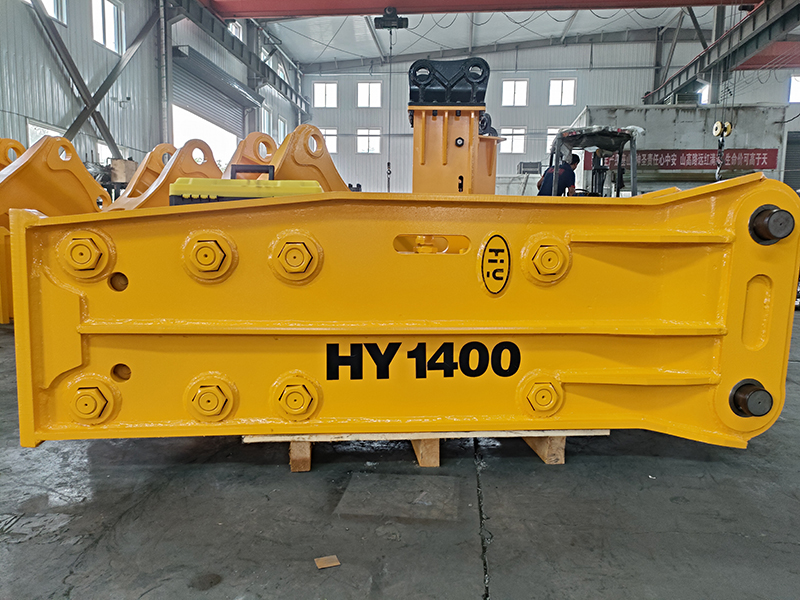Product
News
- Introduction to the treatment of abnormal noise of hydraulic breaker
- OEM service Furukawa HB15 Hb20 HB30 HB40 Hydraulic Rock Breaker Excavator Hammer Breaker
- Excavator-Mounted Jack hammer: The Ultimate Guide to Efficient Construction Demolition Tools
- Excavator ROCK Broken Hammer Chisel Hydraulic Breaker Chisels Tool Drill Rod
- Analysis of common faults of hydraulic breaker: A complete guide to continuity, impact force and impact frequency
- How to adjust the striking frequency of excavator hydraulic breaker
contacts
Contacts:Jacky Zhang
Phone:+8618937103255
Email:hanyunpsq@gmail.com
Address:No. 167, Xuchang Road, Shangjie District, Zhengzhou City
Knowledge
What are the general reasons for hydraulic breaker pressure relief?
Hydraulic breakers, also known as hydraulic hammers, rely on hydraulic pressure to function effectively. However, there are several reasons why a hydraulic breaker might need pressure relief. Here are some general reasons for hydraulic breaker pressure relief:
1. Preventing Overpressure
Hydraulic systems are designed to operate within specific pressure ranges. Exceeding these ranges can lead to system failure or damage. Pressure relief valves are used to prevent overpressure by diverting excess hydraulic fluid away from the breaker, thus protecting it from damage.
2. Protecting Components
High pressure can damage various components of the hydraulic breaker, including seals, hoses, and internal mechanisms. Pressure relief helps to protect these components from excessive wear and tear, extending the life of the equipment.
3. Ensuring Safety
Overpressure conditions can create hazardous situations for operators and nearby personnel. Pressure relief mechanisms help to ensure the safe operation of the hydraulic breaker by preventing dangerous pressure build-ups.

Hydraulic Rock Jack Hammer
4. Maintaining Optimal Performance
Consistent hydraulic pressure is crucial for the effective operation of the breaker. Pressure relief valves help to maintain optimal pressure levels, ensuring the breaker operates efficiently and effectively.
5. Compensating for Temperature Changes
Hydraulic fluid can expand and contract with temperature changes. Pressure relief valves accommodate these changes by allowing excess pressure to be relieved, preventing system stress and potential damage.
6. Avoiding Hydraulic Fluid Leaks
Overpressure can cause hydraulic fluid to leak from seals and fittings. Pressure relief helps to maintain appropriate pressure levels, reducing the risk of leaks and the associated maintenance issues.
7. Preventing Cavitation
Cavitation occurs when the hydraulic fluid vaporizes due to low pressure, leading to damage from the collapse of vapor bubbles. Proper pressure relief helps to maintain adequate pressure levels, preventing cavitation and the resulting damage.
8. Facilitating Smooth Operation
Pressure relief mechanisms help to smooth out pressure spikes and fluctuations, ensuring the hydraulic breaker operates smoothly and consistently.
9. Enabling Load Adjustment
Different tasks may require different pressure levels. Pressure relief systems allow for the adjustment of pressure to match the specific requirements of the task, enhancing versatility and effectiveness.
10. Reducing Wear and Tear
Consistent and appropriate pressure levels reduce the overall wear and tear on the hydraulic system, contributing to longer service intervals and reduced maintenance costs.
Conclusion
Pressure relief in hydraulic breakers is essential for ensuring the safe, efficient, and reliable operation of the equipment. By preventing overpressure, protecting components, and maintaining optimal performance, pressure relief mechanisms play a crucial role in the longevity and effectiveness of hydraulic breakers.
-
2025-04-16 17:33:21
Introduction to the treatment of abnormal noise of hydraulic breaker
-
2025-04-07 13:42:36
Excavator ROCK Broken Hammer Chisel Hydraulic Breaker Chisels Tool Drill Rod
-
2025-03-31 09:06:36
How to adjust the striking frequency of excavator hydraulic breaker











